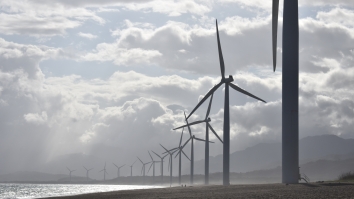India targets to double solar, wind energy by 2030
India aims to significantly expand its solar and wind power capabilities, even as coal retains its dominance in the energy mix.
India is making a push to double its solar photovoltaic (PV) and onshore wind power capacity by 2030, which reflects the country's commitment to expanding renewable energy sources, despite the enduring dominance of coal in its energy mix.
David Thoo, Power & Low Carbon Energy Analyst at BMI, said that India's power market is expanding rapidly, providing opportunities not just for fossil fuels, but also for renewables.
“At this rate, we are actually seeing opportunities not just for fossil fuels, but also for renewables, because of this strong growth and strong power demand for for non-hydro power renewables, we actually see more most of the opportunities be congregated within the solar PV sector and the wind onshore wind power sector,” he said.
Thoo mentioned that this growth is supported not only by central government initiatives but also by state-level policies. Key Indian states like Rajasthan, Gujarat, Tamil Nadu, and Karnataka are setting their own renewable power targets and implementing supportive policies, further catalyzing the expansion of renewables.
According to Thoo, India has set a national target of achieving 500 gigawatts of non-fossil fuel capacity by 2030. To achieve this, the government plans to launch 50 gigawatts of bids for renewable energy annually from the current financial year to 2027-2028.
He added that efforts are being made to ramp up renewable equipment manufacturing facilities through production-linked incentives for the solar and wind power sectors.
Thoo highlighted grid bottlenecks as a significant obstacle due to the lack of high-voltage cross-country lines. Moreover, the current focus on just onshore wind and solar PV may not be sufficient for India to meet its 500 gigawatts target.
“We do not believe that actually banking on just onshore wind and solar PV is sufficient for India to meet its 500 gigawatts target given the current developments. And as such, we forecast India to fall short of its target by about 100 to 200 gigawatts come 2030,” he said.
Despite the strong push for renewables, coal is expected to remain the dominant power source in India's energy mix over the next decade.
"Emerging markets require a steady base load of round-the-clock electricity supply, and at the moment, the most affordable dispatchable electricity in India comes from thermal coal," Thoo explained.
The government's aim to ramp up coal production for energy security further cements coal's position, with an estimated 70% of India's power mix coming from coal through 2032.























 Advertise
Advertise







